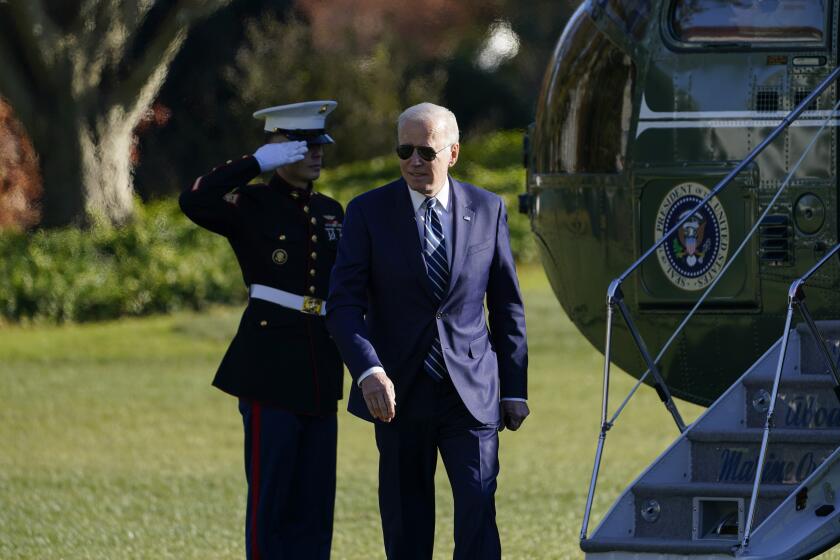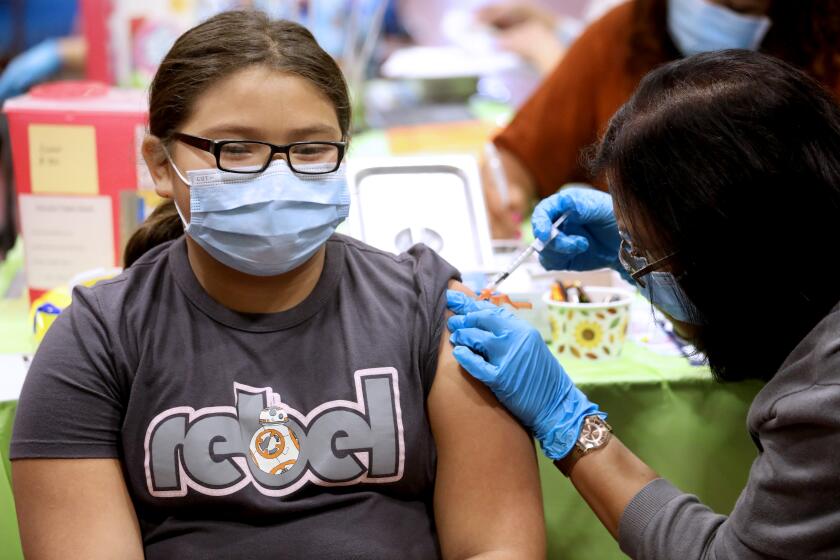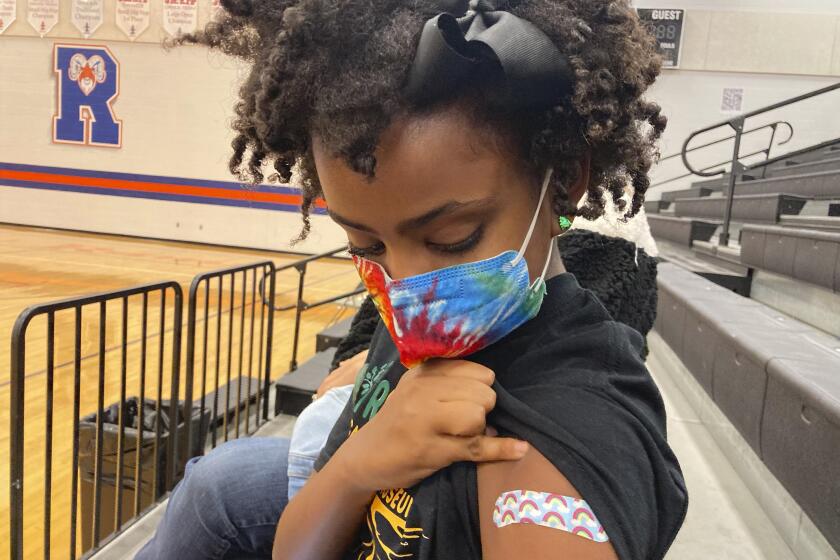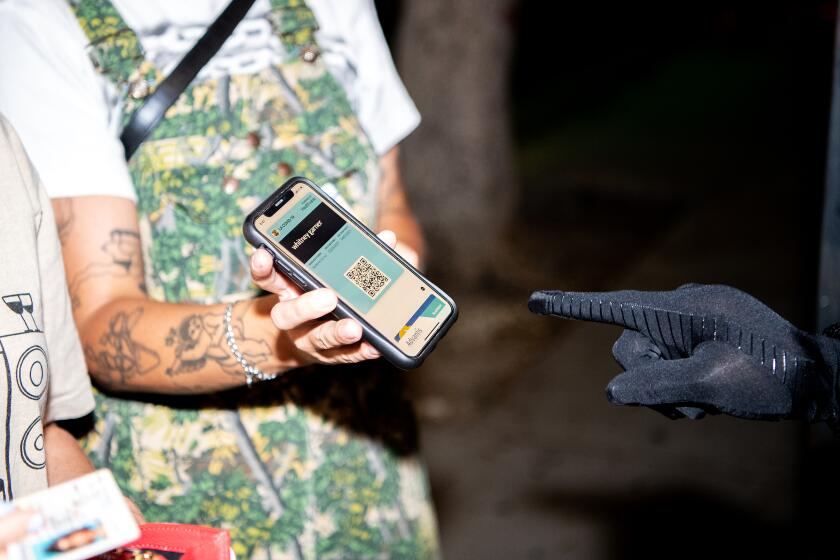In L.A. County, low-income areas have been less likely to get COVID-19 boosters
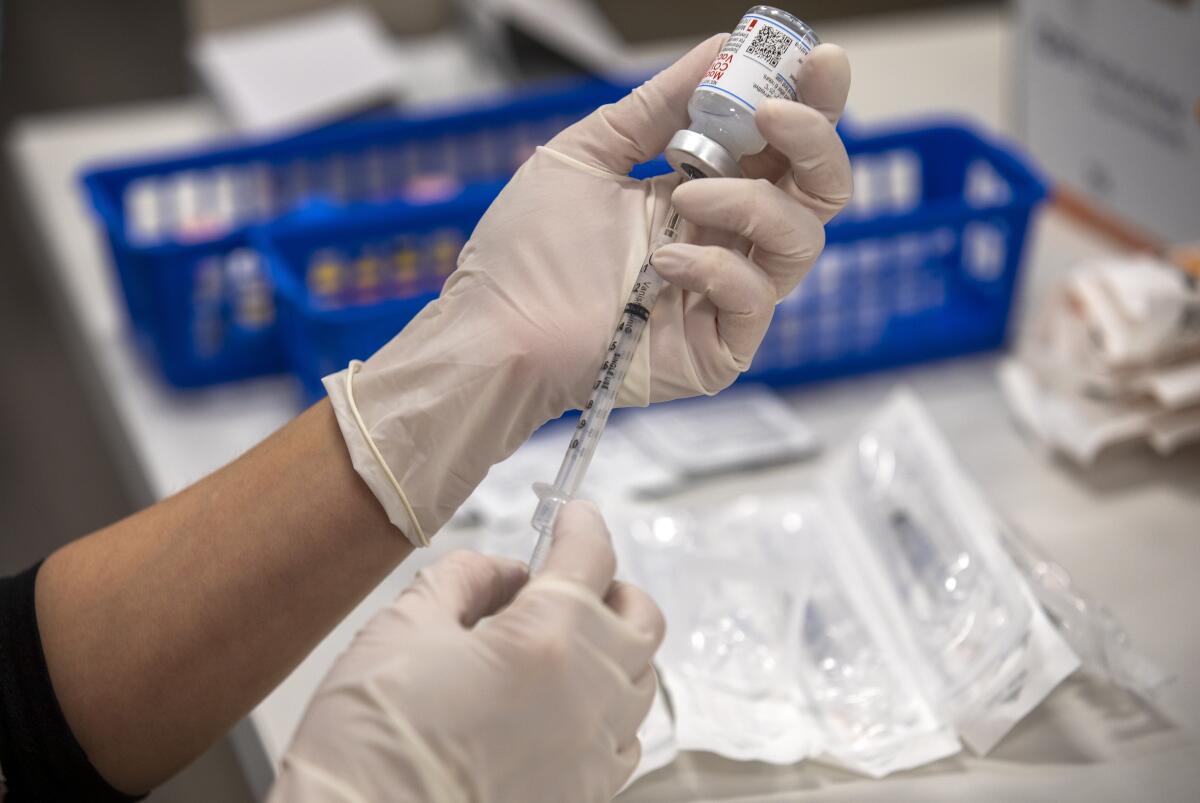
- Share via
The percentage of vaccinated Los Angeles County residents who have gotten COVID-19 booster shots is significantly lower in poorer neighborhoods than other areas, a troubling trend officials say could leave already hard-hit communities exposed to a potential surge over the winter.
In the county’s high-need areas, only 6.9% of fully vaccinated people eligible for additional COVID-19 shots had received a booster as of Nov. 11, health figures show. The areas were identified using, among other things, a socioeconomic measurement tool called the California Healthy Places Index, and include places such as South L.A., southeast Los Angeles County, the Eastside, the eastern San Fernando Valley and El Monte.
Booster coverage in wealthier areas has been significantly higher, at 12.6% as of Nov. 11, according to the L.A. County Department of Public Health.
“We’ve seen uptake patterns suggesting that people in the hardest-hit neighborhoods are not getting booster shots as frequently as those in other L.A. County neighborhoods,” Public Health Director Barbara Ferrer said in a statement.
The Centers for Disease Control and Prevention is expanding guidance for which Americans should receive booster shots.
Initially, the criteria laid out by federal health officials restricted booster access to older residents, those with certain underlying health conditions or who were considered at high risk for COVID-19 exposure based on where they lived or worked. But now, all adults can get the additional doses — so long as they’re at least six months out from their last Pfizer-BioNTech or Moderna jab or two months from the single shot of Johnson & Johnson.
“With mounting data showing that vaccine efficacy is waning over time and that boosters reduce the risk of COVID-19 hospitalizations and deaths among adults of all ages, it’s important that all eligible adults 18 years and older get their COVID-19 booster doses,” Ferrer said.
The recent discovery of the Omicron variant of the coronavirus has also upended the outlook for the pandemic. And health experts are reiterating that vaccines and booster shots for those who are fully vaccinated provide the strongest available protection against the coronavirus.
Throughout the nearly year-old inoculation campaign, officials have said it’s essential to ensure the vaccines are distributed and administered equitably.
But while that work is ongoing, closing the gaps has been easier said than done. And disparities have already emerged — not just in terms of boosters, but among children ages 5 to 11 who only recently became eligible for the shots.
L.A. County health officials said last week that, while 13% of white, 14% of Asian American and 12% of Native American children in that age group had received a shot by Nov. 14, the same was true of just 4% of Black and 3% of Latino children.
It’s a pattern that has experts concerned and could have serious implications for how a coronavirus winter surge could spread through various regions of the state.
In the neediest neighborhoods, 3.9% of the children in this age group have been vaccinated, compared with 12.5% of those living in other communities. The countywide rate at that time was 7.2%.
Officials say the wide application of boosters will help turbocharge immunity heading into the winter — when cooler weather will increasingly push people to gather indoors, where the coronavirus can spread more easily.
But residents who have yet to be vaccinated still stand to benefit from rolling up their sleeves. According to state health data, unvaccinated Californians are seven times more likely to get COVID-19, 13 times more likely to be hospitalized and nearly 16 times more likely to die from the disease than those who have been fully vaccinated.
“Every time we’ve had a big surge in cases, disproportionality in health outcomes has affected our Black and brown residents the most,” Ferrer said during a recent briefing.
“In the past, this most likely reflected differences in workplace exposures and living conditions. Unfortunately, as we saw during the summer surge, these differences in health outcomes are also now fueled by differences in vaccination status,” she added. “If we don’t do better, there could be even greater disproportionality in health outcomes by race and ethnicity if we experience another surge.”
Scientists say vaccinating kids should not only slow coronavirus spread but also help prevent dangerous variants from emerging.
Among all racial and ethnic groups, Black and Latino residents in Los Angeles County are less likely to be vaccinated than white, Asian American and Native American residents.
According to data released in mid-November, of those 5 and older in L.A. County, 54% of Black residents and 59% of Latino residents have received at least one dose of COVID-19 vaccine, compared with 72% of white, 75% of Native American and 80% of Asian American residents. The countywide rate is 75%.
Officials have warned that younger people — because they are less likely to be vaccinated — are reporting higher coronavirus case rates, and are significant sources of coronavirus transmission. While about 75% of those ages 12 to 29 in L.A. County have received at least one shot, 80% of those in their 30s and 40s have done so, as have 84% of those up to age 64 and 95% of seniors 65 and older.
Among unvaccinated groups 12 and older, it’s adolescents who are reporting the highest monthly coronavirus case rate — nearly 30% worse than younger adults up to age 49. This is a change from earlier in the pandemic, when it was young adults who had among the worst case rates in the county.
Officials are urging California to make it easier to transfer hospital patients to places like L.A. County.
Older, unvaccinated people are still most likely to be hospitalized or die from COVID-19.
Health officials have expressed hope that continued safety measures — such as the county health order for patrons to show proof of vaccination before entering indoor bars, wineries, breweries, nightclubs and lounges — will help blunt a potential winter surge.
So far, businesses seem to be largely following the requirement. For the week that ended Nov. 12, county officials reported more than 80% compliance among bars, nightclubs and lounges.
Patrons who don’t provide proof of vaccination against COVID-19 may still be served in an outdoor portion of the business, according to the county health order. Those patrons also can still enter the indoor portion of the business for limited reasons, such as to use the restroom, pay the bill or pick up to-go items.
Some places in Los Angeles city and county won’t let you in without proof of full COVID vaccination. Others will just ask you to wear a mask.
Another stricter law for the city of Los Angeles — generally requiring patrons of indoor businesses such as restaurants, gyms and theaters to show proof of vaccination — has been in effect since Nov. 8 and enforcement began Monday.
The original law also required patrons of malls and shopping centers to show proof of vaccination. However, the L.A. City Council has already signaled that malls and shopping centers will soon be exempted from the vaccine verification rule.
More to Read
Sign up for Essential California
The most important California stories and recommendations in your inbox every morning.
You may occasionally receive promotional content from the Los Angeles Times.
